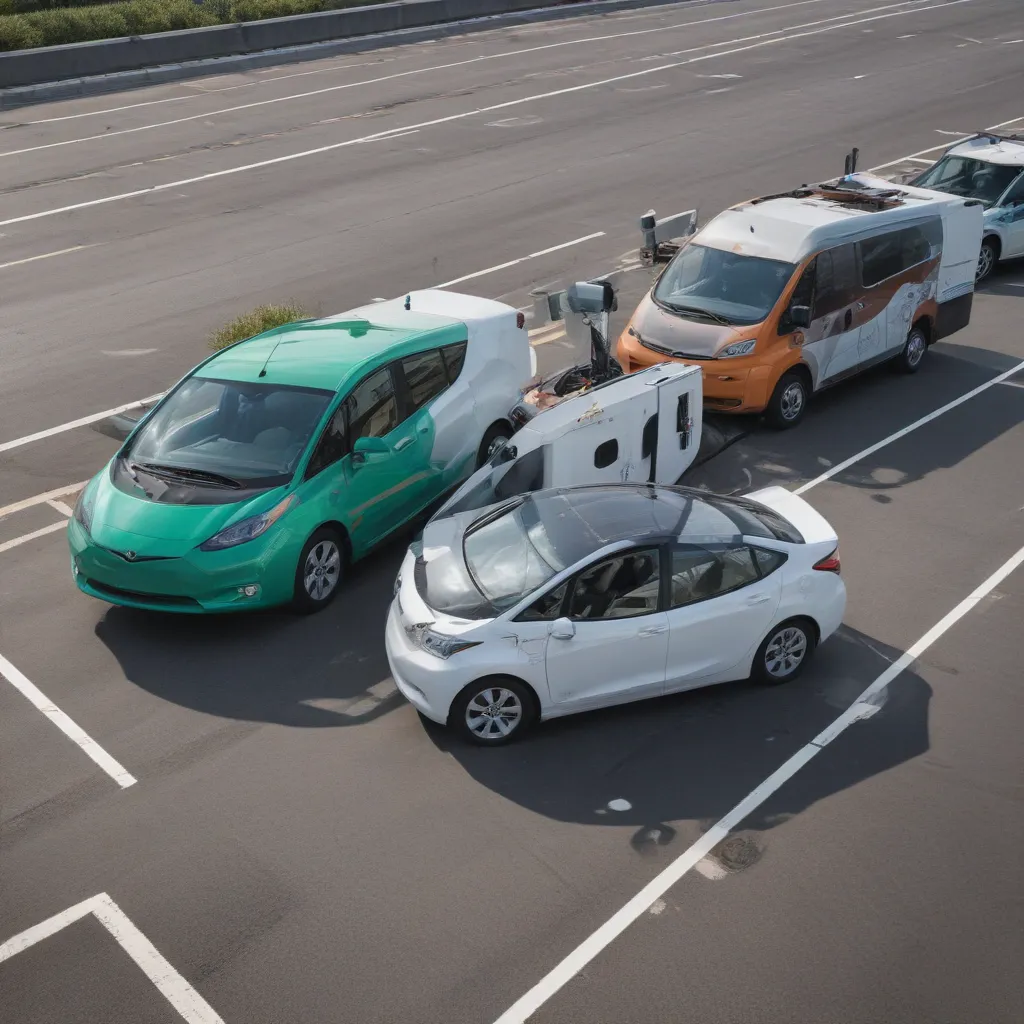
The Electric Awakening: Embracing the Future of Fleet Mobility
As the sun slowly rises over the bustling streets of Orange County, I can’t help but feel a growing excitement about the future of transportation. The hum of traditional gasoline-powered engines is gradually being replaced by the whisper-quiet whir of electric motors, signaling a profound shift in the way we move goods and people around our community.
As the owner of an RV and fleet vehicle repair company, I’ve had a front-row seat to this electric revolution. Over the past few years, I’ve witnessed a steady influx of electric vehicles (EVs) into the fleets of our local businesses, each one representing a step towards a more sustainable and efficient future. It’s a transformation that’s both thrilling and daunting, as we navigate the uncharted waters of integrating these advanced technologies into our existing infrastructure.
But I’m not one to shy away from a challenge. In fact, I see this as an opportunity to lead the charge (pun intended) and help our clients seamlessly transition to a hybrid and electric-powered fleet. It’s a journey that requires a deep understanding of the unique considerations and best practices for maintaining and servicing these cutting-edge vehicles.
Embracing the Electric Revolution: Challenges and Opportunities
As I dive into the world of fleet electrification, I’m acutely aware of the myriad of challenges that come with this transition. The sheer complexity of the technologies involved, the need for specialized training and equipment, and the evolving regulatory landscape all demand a level of agility and adaptability that I’m more than ready to embrace.
One of the biggest hurdles, of course, is the shift in maintenance and repair protocols. The intricate battery systems, regenerative braking, and sophisticated electronic controls that power these electric behemoths require a different set of skills and knowledge compared to their gasoline-fueled counterparts. It’s a learning curve that I’m determined to conquer, investing in the latest training and tools to ensure that our technicians are fully equipped to handle any issue that may arise.
But the opportunities that come with this electric awakening far outweigh the challenges. The environmental benefits of reduced emissions and improved efficiency are undeniable, and I’m thrilled to be a part of the solution. Moreover, the technological advancements in areas like autonomous driving and vehicle-to-grid integration present exciting possibilities for streamlining fleet operations and unlocking new revenue streams.
Navigating the Hybrid Landscape: Blending Old and New
As I look to the future, I envision a world where the traditional and the cutting-edge coexist in perfect harmony. The hybrid fleet, a blend of electric and internal combustion engines, represents a transitional phase that allows businesses to reap the benefits of both technologies while gradually phasing out their reliance on fossil fuels.
The advantages of this hybrid approach are manifold. For one, it provides a more gradual and manageable path to full electrification, allowing organizations to allocate resources and infrastructure upgrades in a strategic and cost-effective manner. Additionally, the versatility of hybrid vehicles, with their ability to seamlessly switch between electric and gasoline modes, can be a game-changer for fleets that operate in diverse environments or require extended range.
But integrating these hybrid systems into our existing fleet maintenance and repair operations is no easy feat. It requires a delicate balance of traditional mechanical expertise and a deep understanding of emerging electric technologies. Our technicians must be versed in everything from battery management to high-voltage electrical systems, all while maintaining their proficiency in the more conventional aspects of vehicle care.
Driving into the Future: Preparing for a Fully Electric Fleet
As exciting as the hybrid revolution may be, I know that the ultimate destination is a fully electric fleet. The advantages of this all-electric future are undeniable: zero direct emissions, improved energy efficiency, and the potential for cost savings through reduced fuel and maintenance expenses. It’s a future that I’m eager to embrace, but one that also presents its own unique set of challenges.
The most pressing concern, of course, is the need for a robust and accessible charging infrastructure. Without a reliable network of charging stations, the range limitations of electric vehicles can become a significant barrier to widespread adoption. This is where I see an opportunity for our company to take a leading role, partnering with local governments and businesses to develop a comprehensive charging ecosystem that supports the growing demand for electric mobility.
But infrastructure is just the tip of the iceberg. The training and equipment required to properly maintain and repair all-electric vehicles are a whole different ballgame. From specialized diagnostic tools to high-voltage safety protocols, our technicians will need to undergo extensive training and certification to ensure they’re ready to handle the complexities of these advanced systems.
Embracing the Challenges, Shaping the Future
As I reflect on the journey ahead, I can’t help but feel a sense of both excitement and trepidation. The transition to a hybrid and electric-powered fleet is undoubtedly a daunting task, but one that I’m more than ready to tackle head-on. After all, it’s not every day that we get the chance to be at the forefront of a revolution in transportation.
I know that the road ahead will be filled with twists and turns, but I’m confident that our team’s dedication, our commitment to continuous learning, and our unwavering passion for this industry will guide us through. We may stumble and face setbacks, but with each challenge overcome, we’ll emerge stronger, more resilient, and better equipped to lead the charge towards a sustainable and efficient future for fleet mobility.
So, let’s strap in and get ready for the ride of a lifetime. The hybrid horizon is upon us, and I can’t wait to see where it takes us.
